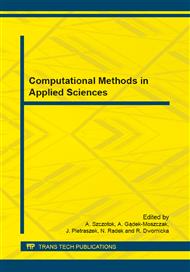[1]
Ch. Chen, Ultrasonic and Advanced Methods for Nondestructive Testing and Material Characterization. World Scientific Publishing, (2007).
Google Scholar
[2]
J. Kwaśniewski, I. Dominik, K. Lalik, Application of self-oscillating system for stress measurement in metal, Journal of Vibroengineering 14 (2012) 61-66.
Google Scholar
[3]
J. Kwasniewski, Y. Kravtsov, I. Dominik, L. Dorobczyński, K. Lalik, Self-Excited Acoustical System for Stress Measurement in Mass Rocks, Journal of Low Frequency Noise Vibration and Active Control 32 (2013) 133-144.
DOI: 10.1260/0263-0923.32.1-2.133
Google Scholar
[4]
V. I. Babitsky, V. K. Astashev, A. N. Kalashnikov, Autoresonant control of nonlinear mode in ultrasonic transducer for machining applications, Ultrasonics 42 (2004) 29-35.
DOI: 10.1016/j.ultras.2004.01.004
Google Scholar
[5]
P. Duda, R. Dwornicka, Optimization of heating and cooling operations of steam gate valve, Structural and Multidisciplinary Optimization 40 (2010) 529-535.
DOI: 10.1007/s00158-009-0370-8
Google Scholar
[6]
I. Dominik, M. Iwaniec, Ł. Lech, Low frequency damage analysis of electric pylon model by fuzzy logic application. Journal of Low Frequency Noise Vibration and Active Control 32 (2013) 239–249.
DOI: 10.1260/0263-0923.32.3.239
Google Scholar


